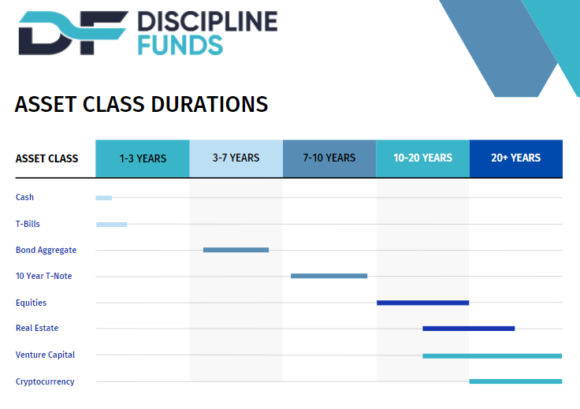I’ve previously described how good financial planning and asset allocation is a “temporal conundrum”. More specifically, our liabilities tend to have fixed temporal constraints. You pay a monthly credit card bill. You have a 30 year mortgage. You pay monthly rent. We have all these liabilities that we have to meet across specific time horizons. From a financial planning perspective we want to match our assets across time with those liabilities so we can meet our financial goals. For instance, you earn a certain amount of income every month and you want to match that income so that you can meet your liabilities while also saving. But you also need to save and allocate your savings so that you can meet certain or uncertain financial needs in the future. Ideally, you will structure that portfolio so that it will create certainty across time in case you need to meet certain goals such as a withdrawal rate.
From a specific asset allocation perspective it can be useful to try to match specific assets to specific liabilities. For instance, if you needed cash for a house down payment within the next 3 years you would not want to expose that cash to an asset that has a high probability of losing principal inside of that period. As a simple example, a 3 year government bond would be a suitable asset as it matches the duration of the liability to the duration of the asset. In doing so you know that you will earn a better return than cash while also having a very high probability of having the principal you need at the time of the down payment. Allocating this cash to stocks, on the other hand, might expose it to principal risk that would be inappropriate.

Cash and bonds are fairly straight forward within this process as they have fixed coupons, fixed maturities and easily understandable credit qualities. Stocks and other real assets can make this process more confusing, but it can be useful to try to apply a duration to these instruments as well. I like to think of the stock market like a 30 year high quality yielding bonds. That is, the odds of you losing money in that instrument over 30 years is very low. But it would not be appropriate to fit this allocation into your 3 year liability bucket for the purposes of financial planning.
That’s a general overview of the asset-liability matching approach. I hope you find it helpful.
Mr. Roche is the Founder and Chief Investment Officer of Discipline Funds.Discipline Funds is a low fee financial advisory firm with a focus on helping people be more disciplined with their finances.
He is also the author of Pragmatic Capitalism: What Every Investor Needs to Understand About Money and Finance, Understanding the Modern Monetary System and Understanding Modern Portfolio Construction.

